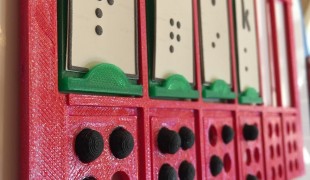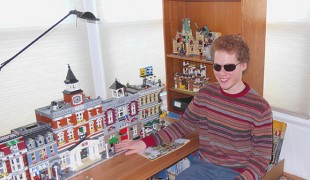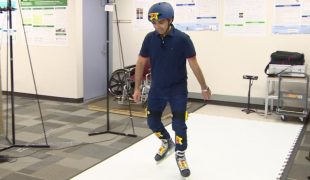- 10293
- 717
- 11
- 11
- 0
- Help Ukraine
About the solution
Montreal’s visually impaired hockey team “Les Hiboux de Montreal” (translated as the Owls of Montreal), have been finding ways to accommodate the sport to their needs, playing with a can filled with marbles for instance, but they still hope to one day play hockey with a proper hockey puck.
Ouellet says, “We discussed with the vice-rector at the university about our project and how we wanted to develop a real electronic puck that would make sound whether it’s in the air or immobile.”
Through the vice-rector, Ouellet was put in touch with Steve Vézeau, a professor of design at UQAM, and the two set to work in developing a hockey puck that could be used by the visually impaired, but still retained the shape and weight of a regulatory puck.
In order to build the puck, Vézeau has opted to make its parts through 3D modelling and 3D printing, using polyurethane as the material.
Because of the puck's audio component, Vézeau’s biggest challenge has been designing a puck shaped casing to hold the fragile audio electronics and to simultaneously withstand being hit by hockey sticks. As he explains of the task, “Our role consists of finding a container, if you will, to contain the electronic equipment and at the same time find a way…to manufacture it so it can keep the equipment secure and, at the same time, be esthetic, solid and light.”
Not only that, however, the developers of the puck have to consider other factors that come along with ice hockey, namely the cold, water and humidity.
Though the puck for the visually impaired is still in development, those involved are hopeful the final prototype will be ready soon. In order to help the process along, Les Hiboux de Montréal have launched a crowdfunding campaign on makeachamp.com. So far, Ouellet says between $8,000 and $10,000 have been spent on the puck’s development.
Ouellet hopes that this season will be the last one Les Hiboux and other visually impaired hockey teams will have to play with a tin can and marbles. “The goal is not to make a profit with this. It’s really to expand the sport, develop it and hopefully bring it to the Paralympics for 2022,” said Ouellet.
Adapted from: http://bit.ly/2f101zl
What about you, do you have any solutions? Please share them with the Patient Innovation community!
这些解决方案不应包括使用药物,化学品或生物制品(包括食品);创伤性设备;冒犯性的,商业或内在危险的内容。该解决方案未经医学验证。请谨慎进行!如果您有任何疑问,请咨询健康专家。
DISCLAIMER: This story was written by someone who is not the author of the solution, therefore please be advised that, although it was written with the utmost respect for the innovation and the innovator, there can be some incorrect statements. If you find any errors please contact the patient Innovation team via info@patient-innovation.com
-
-
438
-
0
-
5559

The Braille Thing?
COMMUNICATION: Communicating, whether by speaking, listening, or other means
Playing
Blindness
Tunnel Vision
3d Printed
Educational/Leisure device (book, toy, game...)
Strategy/Tip
Vision problems
Difficulty coordinating movements
Promoting inclusivity and social integration
Enhancing Mental Health
Caregiving Support
Neurology
Ophthalmology
Pediatrics
United States
-
-
-
402
-
0
-
5295

Blind Entrepreneur creates language-based instructions for LEGO construction toys
-
-
-
410
-
0
-
5547

Researchers develop wearable technology to aid athletic assessments and rehabilitation
Playing
CAREGIVING
Muscle Tone Abnormalities
Neuromuscular Disorders
muscle
3d Printed
Body-Worn solutions (Clothing, accessories, shoes, sensors...)
Muscle cramps or spasms
Difficulty coordinating movements
Muscle weakness
Numbness or tingling in the extremities
Promoting self-management
Maintaining Balance and Mobility
Preventing (Vaccination, Protection, Falls, Research/Mapping)
Neurology
Physical Medicine and Rehabilitation
Psychiatry
Public Health
Sports Medicine
Canada
-
 zh
zh